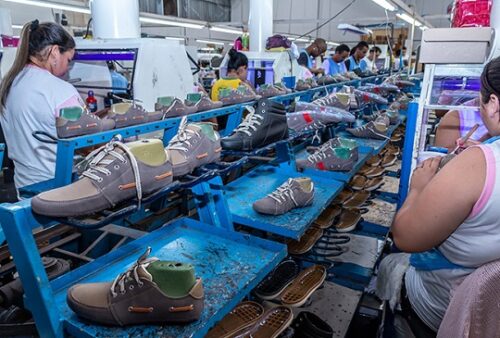 Argentina did impose some export restrictions upon beef exports earlier this year to try and dampen the rising costs for domestic consumption but if anything, this had the opposite effect and so the ruling was reversed. Sales to European origins were on the rise until recently but beef, like hides, is sold in US$ and the falling euro has in many cases put a halt to this. It remains to be seen what impact Australian beef exports will have on the world market when they come back into play following a period of restocking, this is forecast towards the end of this year or early 2023.
Green hide prices generally have remained steady over the past month following a period where price corrections were dominating proceedings. The volume of hides and semi-processed material (wet-blue) that is being exported has not risen as expected, instead the rise in manufacturing across South America has grown, with Brazil recording some very strong volumes of goods produced. It is the domestic footwear industry that is leading the way.
Ever since the outbreak of the pandemic in China over 30 months ago, a number of manufacturers and brands/retailers of finished products had starting to look for alternative locations for their sourcing. At first, it was suspected that much of the work would return to China, but this has not always been the case, following the initial pandemic lockdowns we have witnessed freight prices skyrocket and container availability decrease. Also, earlier this year almost three months of production was lost in China – first, there was the New Year break followed by entire cities being forced back into lockdown. For many shoe manufacturers supplying brands or their own retail network, this was the final straw.
Now, with more manufacturing taking place in South America, as the raw materials are close to the tanneries and the meat processors. Many of the goods produced are destined for North America and Europe, so the export markets are also geographically closer. Clearly the pandemic has created a shift in supply chain sourcing which may well be benefitting tanners and finished product makers across Latin America which may become a more permanent arrangement moving forward.
Argentina did impose some export restrictions upon beef exports earlier this year to try and dampen the rising costs for domestic consumption but if anything, this had the opposite effect and so the ruling was reversed. Sales to European origins were on the rise until recently but beef, like hides, is sold in US$ and the falling euro has in many cases put a halt to this. It remains to be seen what impact Australian beef exports will have on the world market when they come back into play following a period of restocking, this is forecast towards the end of this year or early 2023.
Green hide prices generally have remained steady over the past month following a period where price corrections were dominating proceedings. The volume of hides and semi-processed material (wet-blue) that is being exported has not risen as expected, instead the rise in manufacturing across South America has grown, with Brazil recording some very strong volumes of goods produced. It is the domestic footwear industry that is leading the way.
Ever since the outbreak of the pandemic in China over 30 months ago, a number of manufacturers and brands/retailers of finished products had starting to look for alternative locations for their sourcing. At first, it was suspected that much of the work would return to China, but this has not always been the case, following the initial pandemic lockdowns we have witnessed freight prices skyrocket and container availability decrease. Also, earlier this year almost three months of production was lost in China – first, there was the New Year break followed by entire cities being forced back into lockdown. For many shoe manufacturers supplying brands or their own retail network, this was the final straw.
Now, with more manufacturing taking place in South America, as the raw materials are close to the tanneries and the meat processors. Many of the goods produced are destined for North America and Europe, so the export markets are also geographically closer. Clearly the pandemic has created a shift in supply chain sourcing which may well be benefitting tanners and finished product makers across Latin America which may become a more permanent arrangement moving forward. 
使用條款 | 隱私政策 | APLF 可持續發展